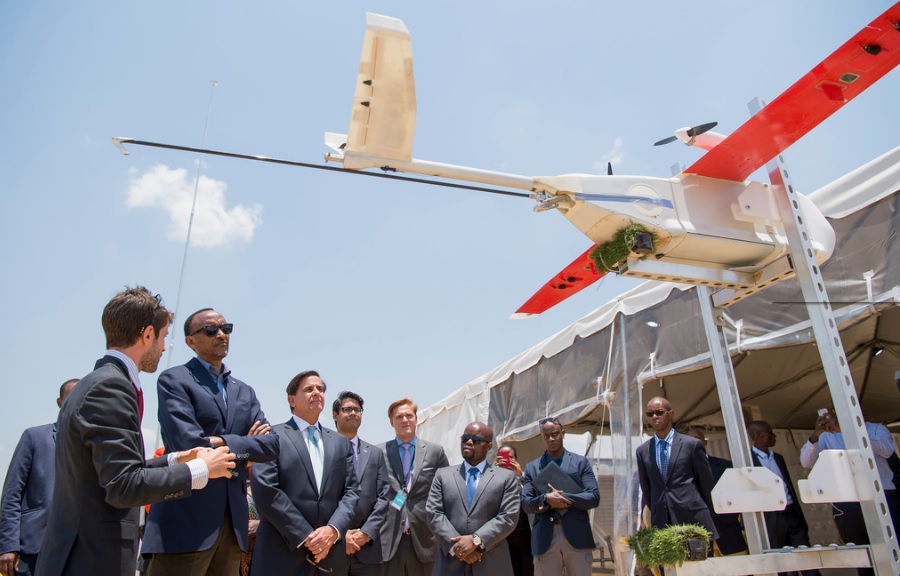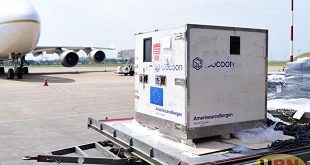
Muhanga, Rwanda | AFP |
“Three, two, one, launch!” And with that, catapulted from a ramp, the small fixed-wing drone buzzes into the air towards its pre-programmed destination, the Kabgayi hospital two kilometres away.
On Friday Rwanda inaugurated a drone operation that its backers hope will kickstart a revolution in the supply of medical care in rural parts of Africa, in the first instance by delivering batches of blood to 21 clinics in the west of the country.
Maternal mortality rates in Africa are among the highest in the world, according to the World Health Organisation (WHO), largely due to postpartum haemorrhage caused by lack of access to simple blood transfusions.
Rwanda is no exception, and the situation here is worsened by the topography of a country dubbed “the land of a thousand hills” as well as intense seasonal rains making the transport of blood by road often long and difficult.
Blood “is a very precious commodity so you cannot just stock a lot of it in every single heath centre,” said Keller Rinaudo, CEO of Zipline, a California-based robotics company that designed the 15 drones and the base housing them in Muhanga, 50 kilometres (31 miles) west of the capital Kigali.

Faster, more efficient
Rinaudo hopes his drone delivery system will “allow the Rwandan government to instantly deliver life-saving transfusions to any citizen in the country in 15 to 30 minutes.”
US package-delivery giant UPS and global vaccine alliance Gavi have invested $1.1 million (one million euros) in the Zipline project, one of a handful on the continent seeking to harness the potential of delivery drones to overcome poor infrastructure.
For the Rwandan government blood delivery by drone is not cheaper, but it promises to be much faster.
The drones dubbed “Zips” are shaped like a fat-bellied miniature plane with a two-metre (six-foot) wingspan.
They are battery-powered with a range of around 150 kilometres, weigh 13 kilos (29 pounds) and can carry a cargo of about 1.5 kilos, or three bags of blood.
Flying at up to 70 kilometres per hour, it is predicted each drone could make as many as 150 deliveries a day.
At the tent that serves as a launch station, Zipline technicians monitor the drones from laptops while others prepare the payload: small cardboard boxes with paper parachutes that will hold the transfusion blood and be dropped from a height of around 20 metres.
As the test flights were carried out curious residents peered through the fence, watching as the drones were flung into the air, returning after dropping their cargo at the hospital, and landing on an inflatable mattress.
Zipline plans to open a second base in Rwanda next year meaning the whole of the tiny country will be within range.
“These flights will save lives,” said Gregg Svingen, head of communications at UPS. “Today it is blood, tomorrow it will be vaccines.”
 The Independent Uganda: You get the Truth we Pay the Price
The Independent Uganda: You get the Truth we Pay the Price


